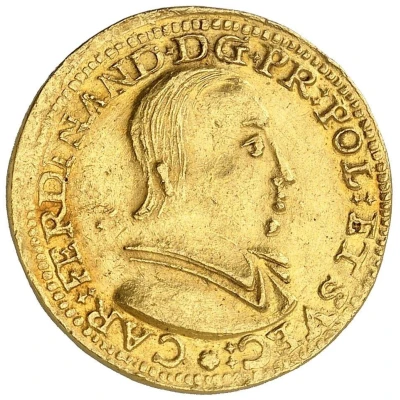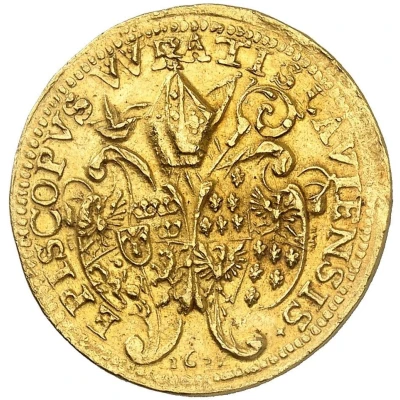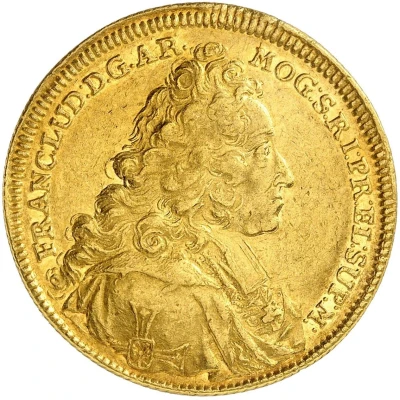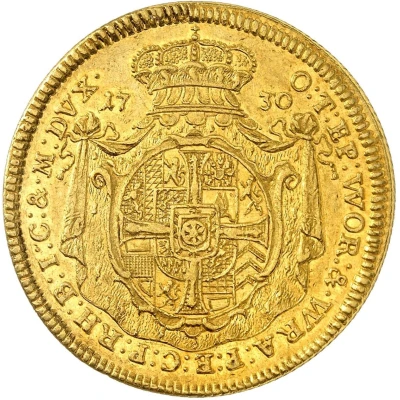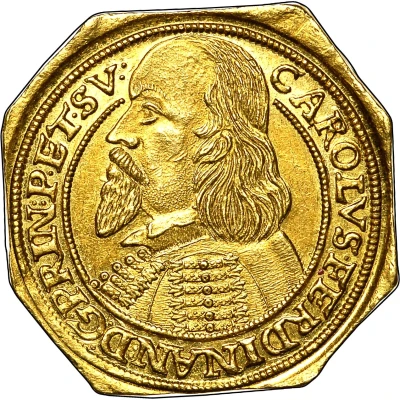
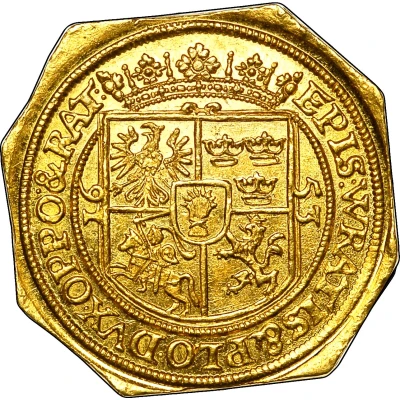

© Heritage Auctions
3 Ducats - Charles Ferdinand Vasa Klippe
1653 year| Gold (.986) | 10.5 g | - |
| Issuer | Bishopric of Breslau (Silesia) |
|---|---|
| Prince-bishop | Charles Ferdinand Vasa (Karol Ferdynand Waza) (1625-1655) |
| Type | Standard circulation coin |
| Year | 1653 |
| Value | 3 Ducats (6) |
| Currency | Thaler |
| Composition | Gold (.986) |
| Weight | 10.5 g |
| Shape | Klippe |
| Technique | Klippe |
| Demonetized | Yes |
| Updated | 2024-10-04 |
| Numista | N#87819 |
|---|---|
| Rarity index | 97% |
Reverse
Crowned arms, date on the sides. Legend around for "Episcopus Wratislaviensis et Ploccensis Dux Oppoliae et Ratisboncae"
Script: Latin
Lettering: EPIS WRATIS ET PLO DVX OPPO ET RAT
Translation: Bishop of Wroclaw (Breslau) and Plock, Duke of Oppole (Oppeln) and Raciborz.
Comment
Karol Ferdynand Waza, Polish nobleman, was son of the Polish king Sigismund III Waza.Breslau, situated along the Oder River in Lower Silesia, was first settled under Bohemian control in the 10th century. Vital for its placement along several trade routes, the city over time passed through the control of Poland, the Austrian Empire, Prussia and Germany. During 17th century, while under occupation by Saxon and Swedish troops, the city was a focal point of the Counter-Reformation, and the Austrian emperor encouraged Catholic settlement in Breslau. Much of the city's present-day feel can be attributed to this period of growth. During the period in which the present coin was struck, Breslau operated as a Bishopric, with right to coin being held by the Bishop. Today, Breslau, now known as Wroclaw, is the largest city in western Poland and has a population over 600,000.
Interesting fact
One interesting fact about the 3 Ducats - Charles Ferdinand Vasa (Klippe) 1653 from Bishopric of Breslau (Silesia) gold coin is that it features a unique design element known as a "klippe" or "clip," which is a small, tab-like projection that extends from the edge of the coin. This feature was used to prevent the coin from being clipped or shaved, which was a common practice at the time to collect precious metal. The klippe also served as a way to easily identify the coin as authentic.
